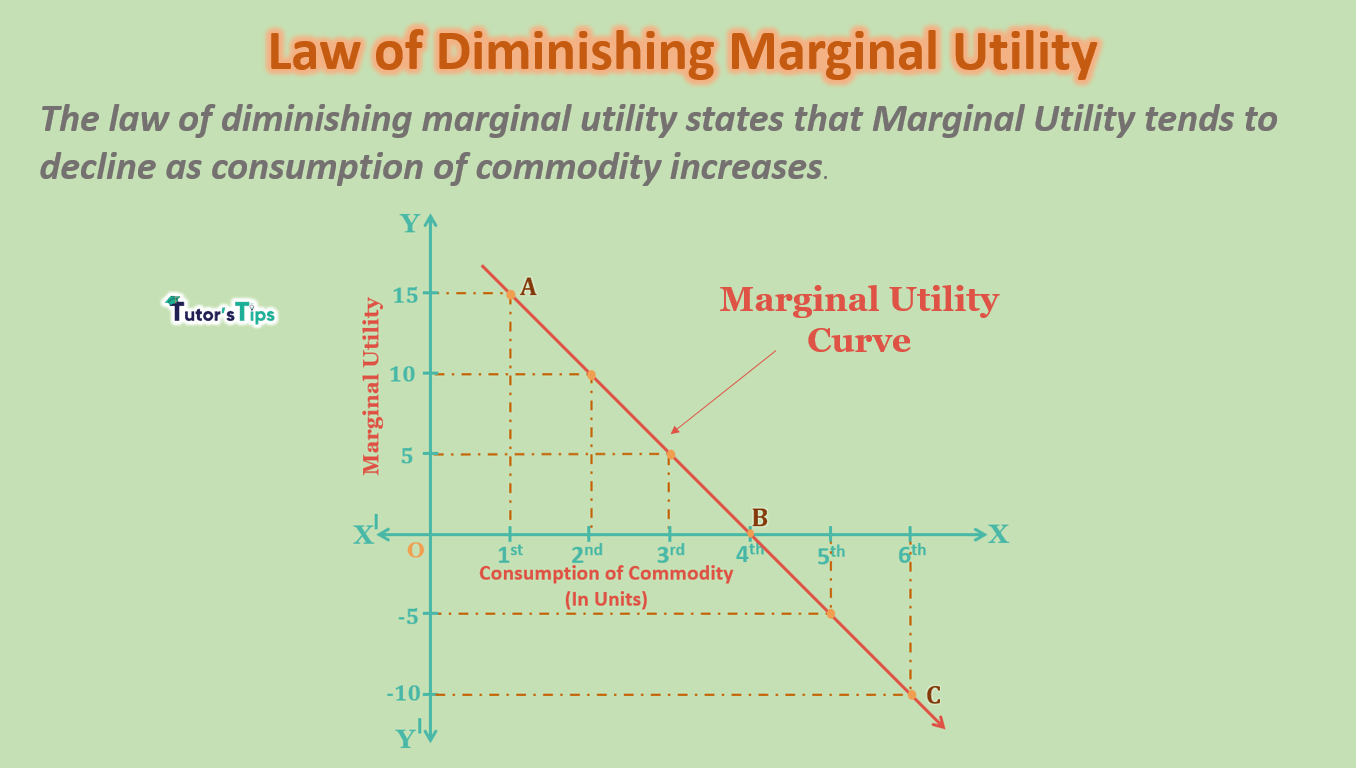The Law of Diminishing Marginal Utility States That

What is Marginal Utility?
Marginal utility is the additional satisfaction or benefit that a person receives from consuming one more unit of a product or service. It is important to note that marginal utility can decrease as a person consumes more of a product or service, which is where the Law of Diminishing Marginal Utility comes into play.
Why Does the Law of Diminishing Marginal Utility Occur?
The Law of Diminishing Marginal Utility occurs for several reasons. One reason is that as a person consumes more of a product, their need for it decreases. For example, if a person is hungry and they eat a sandwich, they will feel satisfied. However, if they continue to eat sandwiches, their satisfaction or utility from each additional sandwich will decrease as they become less hungry.
Another reason the law occurs is because of the law of supply and demand. As the supply of a product increases, the demand for it may decrease, leading to a decrease in the utility or satisfaction a person receives from consuming it.
Examples of the Law of Diminishing Marginal Utility
One example of the Law of Diminishing Marginal Utility is with food. If a person is hungry and they eat a sandwich, they will feel satisfied. However, if they continue to eat sandwiches, their satisfaction or utility from each additional sandwich will decrease as they become less hungry.
Another example is with water. If a person is thirsty and they drink a glass of water, they will feel satisfied. However, if they continue to drink water, their satisfaction or utility from each additional glass of water will decrease as their thirst is quenched.
Yet another example is with clothing. If a person needs a new shirt, they will receive a lot of utility or satisfaction from purchasing and wearing it. However, if they continue to purchase more and more shirts, the utility they receive from each additional shirt will decrease as they become less in need of new clothing.
The Pros and Cons of the Law of Diminishing Marginal Utility
Pros
- Helps businesses determine how much of a product or service to produce and at what price to sell it
- Can help individuals make better consumption decisions based on the utility they receive from each additional unit of a product or service
Cons
- May lead to overproduction and waste of resources if businesses do not properly consider the law
- May lead to individuals consuming too much of a product or service, which can have negative health or financial consequences
Conclusion
The Law of Diminishing Marginal Utility is an important concept in economics that helps businesses and individuals make better consumption decisions. By understanding how the utility or satisfaction a person receives from each additional unit of a product or service decreases, businesses can determine how much to produce and at what price to sell it. Individuals can also make better consumption decisions by considering the utility they receive from each additional unit of a product or service. However, it is important to be aware of the potential downsides of the law, such as overproduction and waste of resources or overconsumption leading to negative health or financial consequences.
FAQ
Q: How does the Law of Diminishing Marginal Utility impact pricing?
A: The Law of Diminishing Marginal Utility can impact pricing by helping businesses determine how much to charge for their product or service. As the utility a person receives from each additional unit of a product or service decreases, businesses may need to lower their prices to continue to sell the product or service.
Q: Is the Law of Diminishing Marginal Utility the same as the Law of Demand?
A: No, the Law of Diminishing Marginal Utility and the Law of Demand are not the same. The Law of Demand states that as the price of a product or service decreases, the quantity demanded will increase. The Law of Diminishing Marginal Utility, on the other hand, states that as a person consumes more of a product or service, the utility or satisfaction they receive from each additional unit of that product or service decreases.
Q: What is the relationship between the Law of Diminishing Marginal Utility and consumer surplus?
A: The Law of Diminishing Marginal Utility can impact consumer surplus by decreasing the amount of surplus a consumer receives as they consume more of a product or service. As the utility a person receives from each additional unit of a product or service decreases, the amount of surplus they receive may also decrease.
Q: How can businesses use the Law of Diminishing Marginal Utility to increase profits?
A: Businesses can use the Law of Diminishing Marginal Utility to increase profits by determining the optimal level of production and pricing for their product or service. By understanding how the utility a person receives from each additional unit of a product or service decreases, businesses can adjust their production and pricing to maximize profits.
